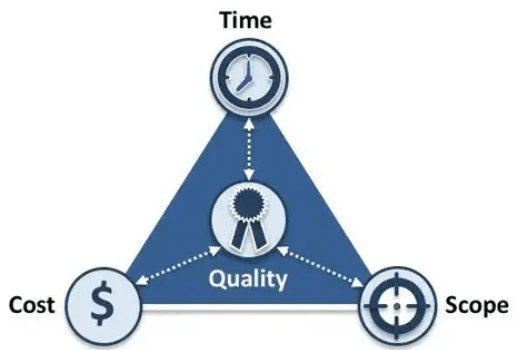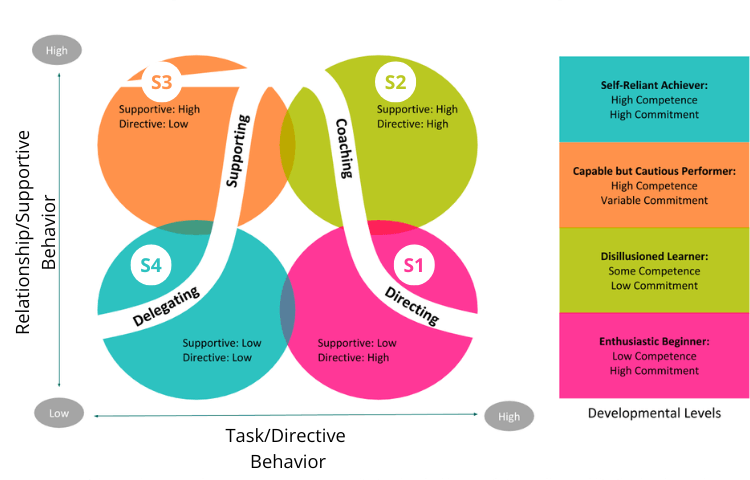Elon Musk Leadership: 7 Styles He Uses Frequently
Elon Reeve Musk (born June 28, 1971) is a businessman and investor. Elon Musk is one of the great leaders who affected our lives in the last 25 years. His unique Elon Musk leadership style has led him to several successful ventures and to become one of the wealthiest men in the world.
📌 Hint: Do not skip this article, you will find FREE Leadership Training resources throughout the article.
💡 You might be interested in the 12 Great Leaders Affected Our Lives in the Last 25 Years article.
Elon Musk Leadership Style
Musk is the founder, chairman, CEO, and chief technology officer of SpaceX; angel investor, CEO, product architect, and former chairman of Tesla, Inc.; owner, chairman, and CTO of X Corp.; founder of the Boring Company and xAI; co-founder of Neuralink and OpenAI; and president of the Musk Foundation. However, his entrepreneurship journey began in the 1990s.
Elon Musk leadership style possesses 7 different styles:
- Solopreneurship
- Task-Oriented Leadership
- Autocratic Leadership
- Project Leadership
- Charismatic Leadership
- Transactional Leadership
- Situational Leadership
Let’s go on each style and elaborate on the characteristics of each leadership style.
Elon Musk Leadership Style #1- Solopreneurship
Many successful businesses start as a side hustle or with the vision of a successful solopreneur. Amazon, Apple, Facebook, and many more were started by solopreneurs in a university dormitory, or in the garage of a home. Solopreneur is a term derived by combining “solo” which means done by one person alone; unaccompanied, and “preneur”, a french word that means “taker”. Actually, “preneur” is derived from the word entrepreneur.
Solopreneurs are entrepreneurs initiating a company and growing it alone until a certain stage. They perform various tasks since they are the owner and only workforce of their business. Some of the functions performed by the solopreneurs are financial management, operations, IT, content creation, marketing, and sales.
In 1995, Musk, his brother Kimbal, and Greg Kouri founded Global Link, later renamed Zip2. The company developed an Internet city guide with maps, directions, and yellow pages, and marketed it to newspapers. Elon Musk showed a solopreneur leadership style in the early stages of his business career. They worked at a small rented office in Palo Alto, with Musk coding the website every night.
When Compaq acquired Zip2, Musk earned $22 million for his 7% share in the company.
Enhance Your Leadership Skills – Executive Leadership Training Program
San Francisco Business School offers an online, self-paced comprehensive executive leadership training program. You can consider enrolling in this program to improve your leadership skills.
Elon Musk Leadership Style #2- Task-Oriented Leadership
Task-oriented leadership or task leadership is a management style that focuses on the timely completion of tasks and projects with the required quality levels. Therefore, task-oriented leaders focus on goals, objectives, and deadlines and make sure there are sufficient processes and procedures to reach the goals. Morale, motivation, and interests of the individuals are secondary for the task-oriented leadership.
Task-oriented leadership has been used for several years and there is no credit for a particular theorist or leader regarding its foundation. There are several managerial and leadership models focusing on task leadership. The most popular ones are the situational leadership model by Hersey and Blanchard and Blake Mouton Grid. Elon Musk leadership style possesses task-oriented leadership traits in many aspects.
Later in 1999, Musk co-founded X.com, an online financial services and e-mail payment company with $12 million of the money he made from the Compaq acquisition. X.com was one of the first federally insured online banks, and over 200,000 customers joined in its initial months of operation. This gave birth to one of the most used payment systems PayPal.
Elon Musk Leadership Style #3 – Autocratic
Autocratic leadership, also known as authoritarian leadership, is a leadership style where leaders or managers have full control and authority to make all decisions with limited input or participation from the team members or others. Autocratic leaders make decisions on their own using their intuition, experience, moral values, and insights. They take no input or limited input from the others. One of Elon Musk leadership styles is authoritarian or autocratic leadership.
In the 1930s, Kurt Lewin developed a framework based on a leader’s behavior. Lewin argued that there are three types of leaders:
- Autocratic leaders make decisions without consulting their teams. Authoritarian leadership is considered when a quick decision is required, when the leaders do not need any input, or when the consensus of the team is not critical for a successful result.
- Democratic leaders foster team participation before making a decision. The level of participation depends on the leader. Democratic leadership style is considered when a consensus is important to get team buy-in. Note that, if there are several differing ideas in the team, it might be difficult to manage and reach a conclusion.
- Laissez-faire leaders do not step in; they create the environment for maximum participation, and let the people make many of the decisions. This leadership style works when there are competent resources in the team, people are motivated and require minimum supervision. You can read more in the Laissez Faire Leadership article.
When there is a more fancy and popular word, “Democracy”, autocratic leadership may sound dim or avoided. However, there are many cases where autocratic leadership works as the best approach.
When does Autocratic Leadership style work?
Emergencies, time-critical tasks, and having an inexperienced team are the best cases to apply autocratic leadership.
- Emergency cases: quick decisions and fast reactions are needed in case of emergencies. This requires minimum time to decide on a solution. Autocratic leadership will work in emergencies.
- Time-critical tasks: When there is time pressure, there might not be time to evaluate different perspectives and opinions from the team. Autocratic leaders make decisions, and team members follow orders. Therefore, autocratic leadership may be beneficial for time-sensitive projects or tasks.
- Inexperienced teams: If your team members are junior and need maximum guidance to perform, autocratic leadership may be better. Also, it is less likely to receive creative ideas from junior professionals, so, group participation may not be needed if you have an inexperienced team.
Free Online Leadership Skills Training Program
One of the requirements to be a good leader is to improve yourself continuously. The best way to do this is, to enhance your competence through training. Take a step ahead and jumpstart your leadership competence. Enroll in our 1-hour Free Leadership Training program.
Elon Musk Leadership Style #4 – Project Leadership
Businesses run projects to create products and services, and in turn, they expect to make profits. Therefore, project management is crucial for businesses and successful project delivery is possible only through effective project leadership. Initiating and growing several companies shows Elon Musk’s project leadership skills.
Project management is delivering a unique product or service in a determined time with the required quality levels. Project leadership is the leaders, managers, and approach that will lead the project from the initiation to the end. Even though project leadership is generally associated with project managers or team leaders, it is an overall concept, vision, and approach to leading projects.
Project management is the art of balancing time, cost, scope, and quality. Because each of these parameters affects the other. For instance, if you are willing to increase the scope, it will add additional costs and time to the project. If you are willing to deliver a project faster, you have to sacrifice quality or scope, or you have to put in additional resources which will increase costs. If you are trying to reduce the costs of the project, you have to be prepared for delays or you have to reduce the scope. Since all these are connected to each other, this is referred to as a project management triangle.

As a successful entrepreneur and businessman in several ventures, Elon Musk has definitely sharp project leadership skills.
Elon Musk Leadership Style #5- Charismatic Leadership
The charismatic leadership style is influencing and encouraging people to perform through communication skills, persuasiveness, empathy, negotiation, and other team leadership skills. It is not a surprise that “Charisma” has been picked as the 4th most important leadership skill among the 21 leadership skills professionals would like to see in their workplace (*). Steve Jobs, Jack Welch, and Winston Churchill are referred to as charismatic leaders.
Elon Musk leadership style demonstrates charismatic leadership characteristics. Charismatic leaders combine charm, interpersonal connection, and persuasiveness to motivate others. Considering the thousands if not millions of people following Elon Musk’s moves, ventures, and ideas, he is definitely applying charismatic leadership traits.
Elon Musk Leadership Style #6- Transactional Leadership
The transactional leadership style assumes that people do things for compensation, rewards, or any material outcomes. Therefore, transactional leaders focus on designing tasks around reward structures, such as promotions, bonus payments, etc. Bill Gates and Howard Schultz are two famous examples of transactional leadership. Although it sounds greedy, leaders and managers use transactional leadership and management style in their work. Elon Musk is one of the transactional leaders as well.
Transactional leadership has two fundamental characteristics:
- Contingent rewards. Team leadership defines the targets, goals, and objectives. Team leaders also clarify expectations from the individuals and declare the rewards that will be given if the expectations are met. The rewards can be bonus payments, merits, or recognition.
- Management-by-exception. Leaders will take proactive or corrective actions based on performance. Typically, there are two types of management approaches here
- Active Management: in this type of transactional leadership, the leader acts as a micro-manager. The leader wanders around all the time, closely monitors team members, evaluates the situation, and takes action for better performance.
- Passive Management: The leader steps in only if there is a problem and if the team needs the leader’s support. Like in Laissez-Faire Leadership style.
Watch Laura’s 30 Seconds Experience – Executive Leadership Training Program
Hear from Our Alumni Laura Smith, Head of Design. Laura attended the Executive Leadership Program at SFBS.

Elon Musk Leadership Style #7 – Situational Leadership
Situational leadership proposes that leaders apply one of the four different types of leadership in every situation or task they face. As there are different types of resources and people in the communication sphere of project leadership, they must possess situational leadership traits.
A Situational Leader employs one of four leadership styles that provide him or her with the highest probability of success in every situation they encounter. Those situations are a function of the task that needs to be performed, in conjunction with the task-related ability and willingness of the follower identified to perform it.
Elon Musk assesses the situation and how he can affect the follower or the performer of the task and applies one of the four styles. This makes him a situational leader. Hersey and Blanchard categorized these styles operationally as Task/Directive Behavior and Relationship/Supportive Behavior. You can see the four types of leadership behaviors in the following figure.

Let’s illustrate this over an example project.
A Good Example of Elon Musk’s Situational Leadership – Marketing Project
To better illustrate project leadership, we will explain it through a fictitious scenario.
Richard is working as a Marketing Project Manager in a prestigious marketing agency, MarketPro. Recently, his manager assigned him a new product launch marketing project. Richard will work with one of the company’s most valued clients, Pharma King, for two months to generate a powerful marketing project for a new vitamin supplement they are launching.
Richard has four team members, David, Lisa, Chris, and Jane. Each has different levels of experience, motivation, and maturity. Here is how Richard manages each member during this short-term marketing project.
David – Junior Marketing Analyst
David joined the team one month ago. He just graduated from university and he does not have enough experience to perform the tasks on his own. David has gone through some training programs and this project will be his first professional assignment. He is willing to take tasks but he is worried if he can perform on his own.
So, Richard applies the S1: Directing style of situational leadership for David.
Lisa – Creatives Professional
Lisa has two years of experience and MarketPro is her first job. She has worked on different marketing projects before however, this will be her first experience in a marketing campaign for a pharmaceutical company, so she has some hesitations although she is willing to take on new tasks.
So, Richard applies the S2: Coaching style of situational leadership for Lisa.
Chris – Senior Marketing Expert
Chris is a senior marketing expert with over 8 years of experience. MarketPro is his third job and he has been working here for more than three years. Chris worked on various projects, including launching pharma products as well. Chris was expecting a promotion in the last organization change, and he could not get it, so he is a little bit demotivated.
So, Richard applies S3: Supporting style of situational leadership for Chris.
Jane – Marketing Team Lead
Jane has over 10 years of experience in marketing. She has worked in reputable companies and joined Market Pro two years ago. Jane launched similar products for similar companies more than 10 times. Richard and Jane worked on various projects together and he knows that Jane has an “assigned me and consider it done” style. Jane earned a grade in the company this year and is considered a role model even from other functional departments.
So, Richard applies S4: Delegating style of situational leadership for Jane.
You can consider the Blake Mouton Management Model as well for leading project resources.
Summary
Elon Musk leadership style varies depending on the projects, people, and environment. He uses 7 types of different leadership styles. At the beginning of his career, he was a solopreneur as he had limited resources to finance his projects.
Now, he uses task-oriented leadership, autocratic leadership, project leadership, charismatic leadership, transactional leadership, and situational leadership in his businesses.

